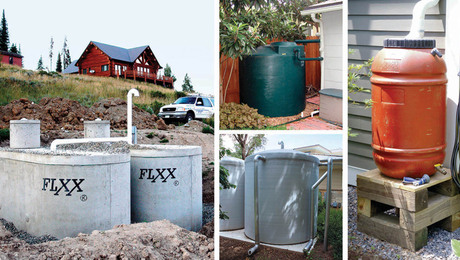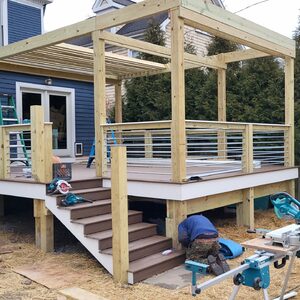adjusting an oxy-acetylene cutting torch
I’m new to using a torch. Learning to wled — not pretty, but the pieces are getting connected. But now In eed to cut some pieces.
There are three adjustment knobs: acetylene feed, oxygen for running the “heating” part of the torch, and the extra oxygen for cutting after the piece is heated.
When you start up the torch for heating, I assume that you use only the first two adjustments. Then how do you set the “extra oxy” knob? I’m having trouble with the flame just blowing out when I hit the cutting lever, or sometimes I can’t get the heater parft set right.
All help appreciated
Bob Chapman


















Replies
Start by checking the regulator settings.
Aceteylene 7psi.
Oxygen 10-12 psi.
Light the acet. and slowly turn on the oxy.
Adjust the flame until it burns clean and quiet.
Hold down the lever and slowly add oxy.
If the flame blows out the fire wasn't hot enough
That 3rd valve (I think) is just a safety so when you are heating something and you pull the trigger you dont blast thru it.
I have done a ton of scrap cutting in my 1st life and always just made sure it was wide open.
NAIL IT !!!
two valves at the base of the torch, one oxygen and one acetylene. Open the primary oxygen full. Crack the acetylene. Light the torch. Your flame will be smokey. Crack the other oxygen valve, where the lever joins the body of the torch, so that the blue flame just disappears. Open and close it and you'll see what I'm talking about.
When you go to cut, heat the metal until it's cherry red, then just slightly squeeze the lever. If it doesn't start cutting, you'll need to heat the metal some more, or increase the flame. To increase the flame, open the acetylene some more, then add oxygen until the flame is right.
The primary oxygen valve needs to be full open to give you the cutting pressure you need.
Jonathan
as I read the other replies, let me modify the above. Crack the acetylene. Light it. It's smokey. Increase it until you think you've got enough heat. Squeeze the lever, then adjust the upper Oxygen valve until the flame is right.Good luck.Cheers
Jonathanfair winds and following seas
Thanks for everyone's help. I will try again today.
Bob
Make sure you don't open the acetylene valve too much when you are lighting the torch, or you will have a violent experience ( especially if your lighter takes a couple of flicks or more to spark )
When you are adjusting the oxygen with the small knob by the lever, do what ME told you and watch the blue fingers of the flame. You want to add just enough oxygen ( with the lever held down ) to bring the flame tips back toward the tip of the torch and even them out. Any more than that and you are wasting oxygen and will make a bad cut.
Keep the flame of the torch tipped slightly toward the direction of cut so you are preheating the area in front of the cut.
If the slag is not blown out of the cut line cleanly, you either haven't heated it enough or you need to adjust the oxygen. If it makes a big, wide cut, you are heating too much or moving the torch too slowly.
Practice....Practice
( especially if your lighter takes a couple of flicks or more to spark )
Ok, I'll assume the standard arguments here (always done it that way, been doing it forever without problems...)
But...
Using a lighter to ignite a torch isn't smart.
Always use a sparker.
Never something that has butane, or did have butane in it.
$.02
No, you're right. I didn't realize how I worded that! I'm not a smoker, so I have never used the other kind of "lighter."
I've always used a "spark lighter" as you suggested for lighting a torch. We always refer to that as the " lighter". A common complaint around the shop is that someone is walking around with the "lighter" in his back pocket instead of hanging it back on the tanks where it's supposed to stay!
As you said, using a cigarette lighter to light a torch is stupid, but it's probably been done more than once.
I haven't run a torch in a long time but the 3 knobs make sme think you have a cutting torch.
What are trying to do with it? Cut or braize?
But now In eed to cut some pieces.
"When the spirits are low, when the day appears dark, when work becomes monotonous, when hope hardly seems worth having, just mount a bicycle and go out for a spin down the road, without thought on anything but the ride you are taking." — Sherlock Holmes, 1896
gracias
well you got enough replies,but i'm going to add my 2 cents in. acc gauge should be set in the 7-9 lb range,oxy at 30 lb
with the cutting head screwed on turn the oxy valve on the handle full open.
now light the torch and as it is burning acc, turn the valve open till it actually jumps the fire out from the torch tip,then back the valve down till the flame comes back to th tip,now slowly turn the upper oxy valve on,till you have a real nice "sharp flame",your ready to go.
when welding you need to adjust the flame in the same manner,with a good clean sharp burn. if thats to hot for what your welding then get a smaller tip.
if your learning how to weld make sure the metal is clean,that you are using welding rod,not coat hangers. also you might buy a little flux coated brass and play with it,it takes alot less heat and is almost like soldering.the great thing about oxy/acc welding is you can come right back and remelt and flo it out better.
tips:have fun and be sure and pick the metal up with your bare hands within 30 seconds to make sure it's still hot.
while using a cutting torch,tennis shoes work really great for capturing the molten metal so that your garage floor stays clean,just empty you socks while at the burn center.
YOU ONLY NEED TWO TOOLS IN LIFE - WD-40 AND DUCT TAPE. IF IT DOESN'T
MOVE AND SHOULD, USE THE WD-40. IF IT SHOULDN'T MOVE AND DOES, USE THE
DUCT TAPE.
I took a welding class in high school. Against my teachers recommendations, and my better judgement, I was practicing welding while wearing tennis shoes. The torch tip overheated and popped, sending my weld pool everywhere. A little glob went down into my shoe, and fused my skin to my sock. Great fun!
Hi,
Nice comment of your forum post , It show very nice message regarding oxy torch, perfect work contiune up it...
Even though this is an old thread brought back to life by some quirk of nature, I'm going to add my thoughts.....
I've never read so much crappy bad and dangerous advice on this forum ever before. A oxy/acetylene torch is one of the most dangerous and ill tempered tools that one can have in a shop. The idea that anyone could be "taught" how to safely handle a cutting torch by reading a few paragraphs on an internet forum is absolutely nuts. Danger, in every sense of the word, lurks in every step of the operation. Handling the bottles, attaching the regulators, handling the torch, setting pressurs, etc all are critical. If you don't know this then you shouldn't be using the tool let alone giving anyone advice.
To the OP and anyone else: This is one piece of equipment and process where you must get some expert hands-on advice. Take a lesson from a school or hire a journeyman welder to teach you. Do something positive. Otherwise you might just launch a oxygen bottle through your garage wall or blow yourself to kingdom come.
saw 10 to 30 psi for oxy in nprev posts. I keep my oxy pressure up around 25 psi, 30+ psi if over 1" thick steel plate.
Nobody mentioned propane yet - it is a LOT cheaper than acet!! Buy a propane cutting tip - the acet regulator screw right onto the propane tank also, the tip simply replaces the oxy acet tip, smae handle, etc. .
I adjust the heat flame to slightly excess oxy, a good way is to vary the fine oxy adjustment and watch the steel color and sparkles. Experience will show you when to hit the oxy handle - aka when you get a lot of sparkles....
ya can always take a step up and buy a plasma cutter
Before you need to light the torch you should always make sure that regulator pressure adjustment screws are blacked out, torch valves must be closed, open and close the torch valves separately.